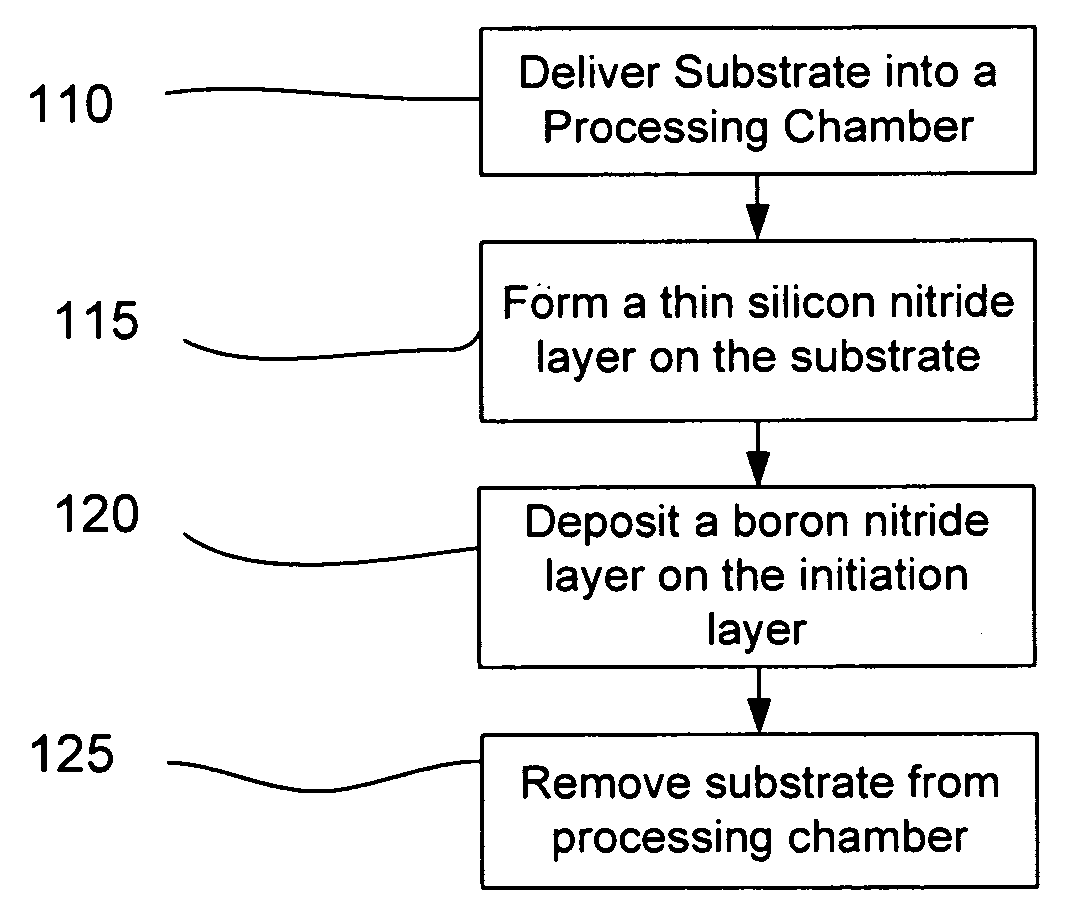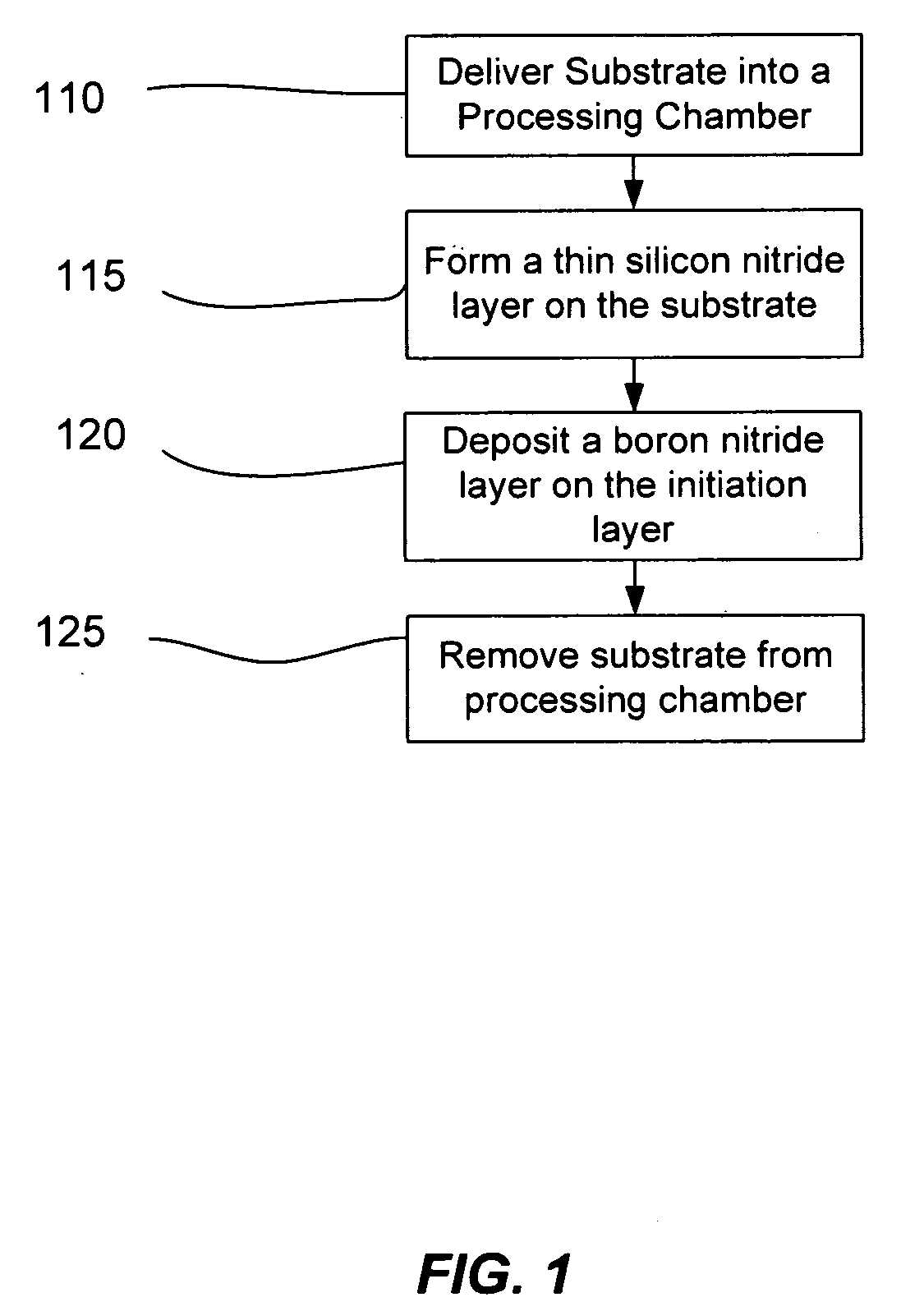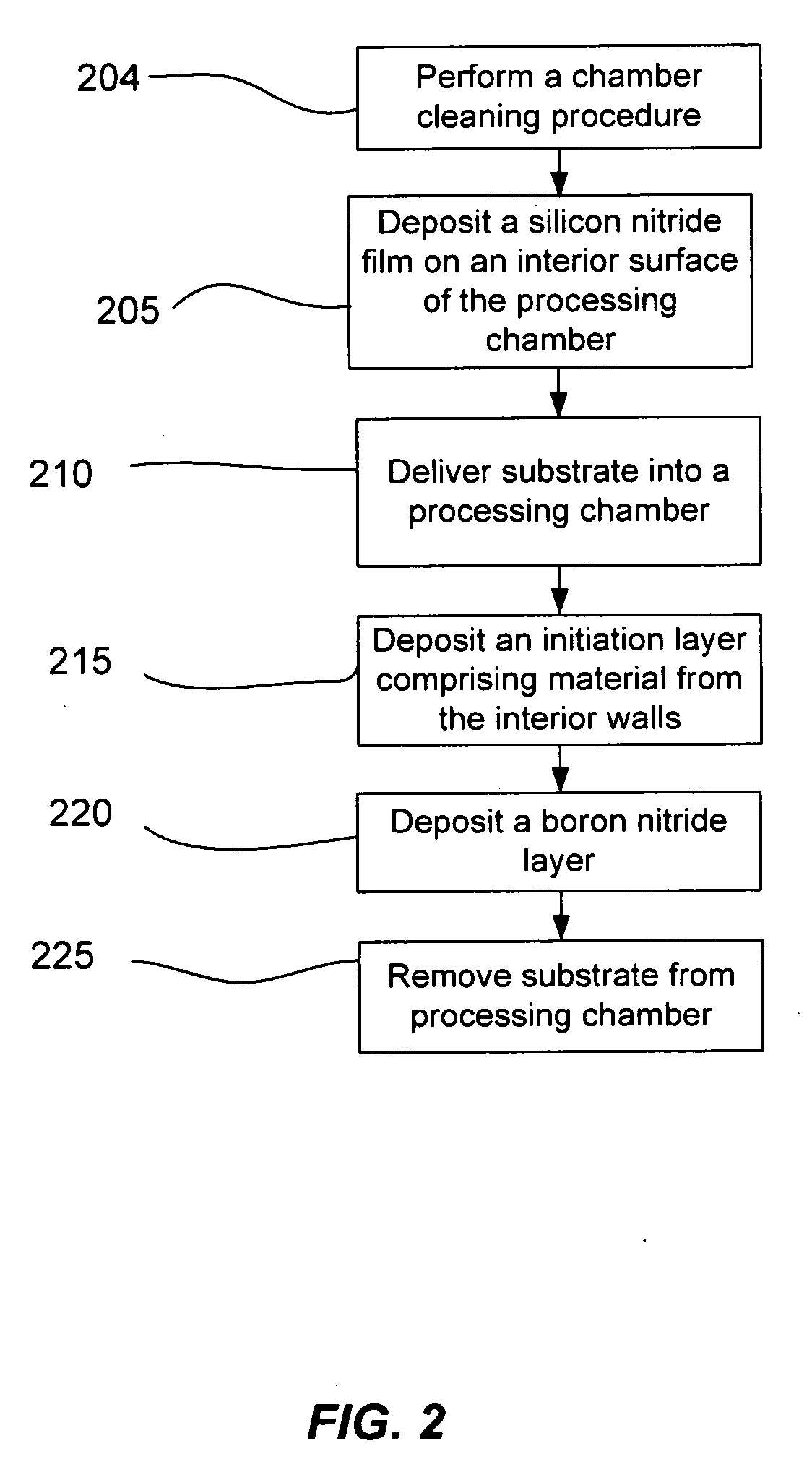Boron film interface engineering
a technology of boron film and interface, applied in the direction of coating, chemical vapor deposition coating, plasma technique, etc., can solve the problems of increasing undesirable electrical interactions between adjacent circuit elements, reducing the width of these trenches, and increasing the aspect ratio of the trenches
- Summary
- Abstract
- Description
- Claims
- Application Information
AI Technical Summary
Benefits of technology
Problems solved by technology
Method used
Image
Examples
Embodiment Construction
[0018]Aspects of the disclosure pertain to methods of depositing boron-containing liner layers on unpatterned or patterned substrates. The boron-containing liner layer provides benefits pertaining to the performance of a device, the longevity of a device or the manufacturing process flow. In embodiments, the boron-containing liner layer is a bilayer including an initiation layer of barrier material to inhibit the diffusion of boron from the bilayer into the underlying substrate. For some substrates, the initiation layer may also inhibit the diffusion of material from the substrate into or across the bilayer.
[0019]The initiation layer may be formed directly on the substrate. Alternatively, the initiation layer may be formed by depositing barrier material on the inner surfaces of the processing chamber in the absence of a substrate. This process may be referred to as seasoning the chamber herein. The barrier material may be redeposited with a plasma process after the substrate is intr...
PUM
| Property | Measurement | Unit |
|---|---|---|
| temperature | aaaaa | aaaaa |
| temperature | aaaaa | aaaaa |
| temperature | aaaaa | aaaaa |
Abstract
Description
Claims
Application Information
 Login to View More
Login to View More - R&D
- Intellectual Property
- Life Sciences
- Materials
- Tech Scout
- Unparalleled Data Quality
- Higher Quality Content
- 60% Fewer Hallucinations
Browse by: Latest US Patents, China's latest patents, Technical Efficacy Thesaurus, Application Domain, Technology Topic, Popular Technical Reports.
© 2025 PatSnap. All rights reserved.Legal|Privacy policy|Modern Slavery Act Transparency Statement|Sitemap|About US| Contact US: help@patsnap.com



